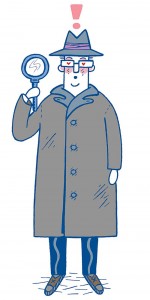 It was Oscar O’Neill’s 30th wedding anniversary. Oscar was a hopeless romantic: his attempts to be romantic were hopeless. That was one reason why it was also the 29th anniversary of the day his wife left him.
It was Oscar O’Neill’s 30th wedding anniversary. Oscar was a hopeless romantic: his attempts to be romantic were hopeless. That was one reason why it was also the 29th anniversary of the day his wife left him.
Oscar was therefore in a rather melancholy mood when DI Stott rang to tell him that a contact lens had been found at a crime scene and he wanted Oscar to have a look at it.
Later that afternoon, Stott brought an evidence bag containing a small pot. Oscar opened the pot to reveal a rigid lens in some solution. Stott explained that a suspect appeared to have lost the lens during a scuffle with a jeweller while trying to steal a diamond necklace from a window display. Forensics had failed to find enough DNA on the lens to be helpful.
Register now to continue reading
Thank you for visiting Optician Online. Register now to access up to 10 news and opinion articles a month.
Register
Already have an account? Sign in here


